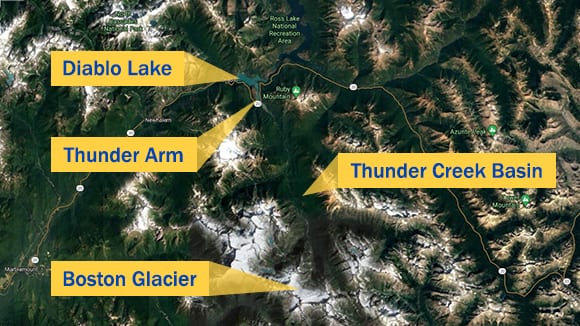

Every year, the North Cascades National Park Complex welcomes hundreds of visitors looking for outdoor activities among the stunning vistas of the North Cascades. And there are few sights more Instagram-worthy than the shimmering green waters of Diablo Lake, one of the reservoirs at Seattle City Light’s Skagit Hydroelectric Project.
Diablo Lake’s hue may seem magical, but it is actually a product of the North Cascades’ unique geology combined with snowmelt. The park complex has over 300 glaciers, more than any other area in the United States outside of Alaska. Boston Glacier (the largest of the bunch) and many other glaciers among snowy peaks drain into Thunder Creek Basin and then into the Thunder Arm of Diablo Lake. Along the way, the snowmelt picks up the essential ingredient for Diablo Lake’s pleasing pigment: glacial flour from Skagit gneiss.

Glacial flour is a blanket term for the fine silt produced when glacial ice grinds rock into powder under its tremendous weight and gradual movement. You can see it anywhere glaciers drain into bodies of water, but it is typically a milky color. Gneiss (pronounced “nice”) is coarse-grained metamorphic rock with a banded structure.
What makes glacial flour from Skagit gneiss so… well, nice is the mineral olivine, which, as you might have guessed from its name, is a gorgeous green. In fact, olivine is the mineral that makes up the gemstone peridot. As it fills Diablo Lake with the raw material needed to generate City Light’s hydropower, the olivine-infused glacial water is enhanced by the increasingly frequent spring sunshine.
You can get an up-close look at the shimmering green waters of Diablo Lake this summer on one of our Skagit Tours. Tours in 2021 will run from July 1 to September 26 and provide an hour-long boat cruise around the lake. Visit our website for more information or to book your tickets to visit Diablo Lake today! It’s truly a jewel of the North Cascades.